There are over a dozen pictures on this page, so be patient while the images load.

I had no check-ins scheduled for 6:00, so took a few pictures around the facility.
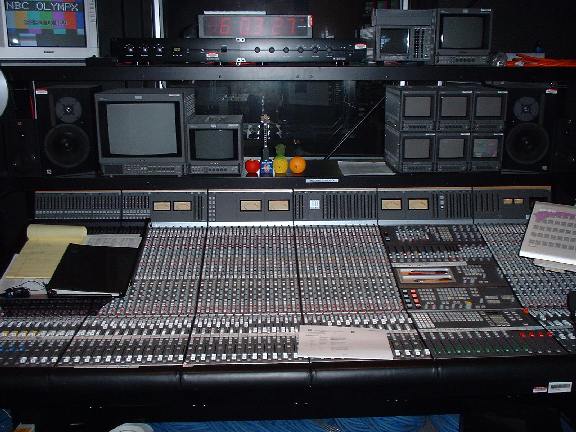
This is the audio console for the main control room, a Calrec Q2. A second control room has an identical console.
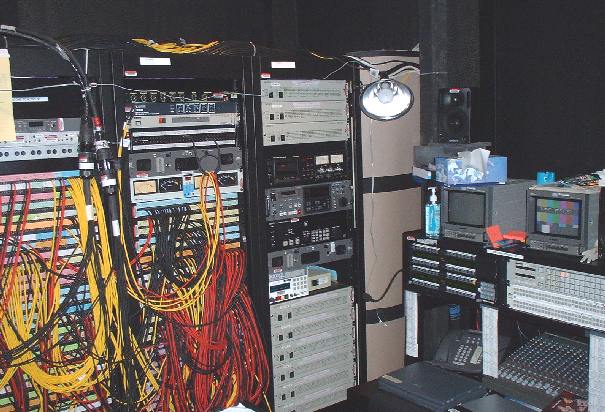
Some of the audio patching necessary for the primetime Olympic show, also in the Control A audio room.
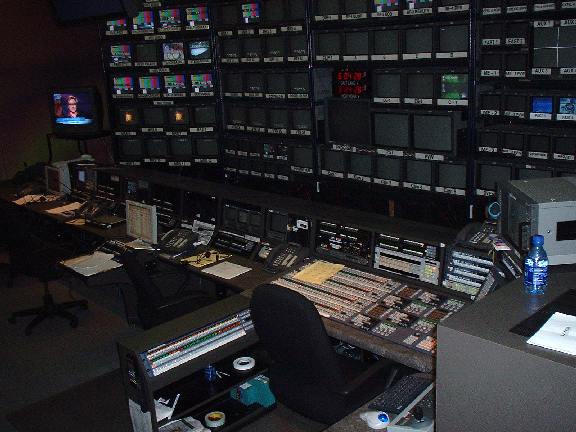
This is the A Control room, which controls the primetime and afternon Olympic shows on NBC. There's a second control room with similar equipment for the second studio.
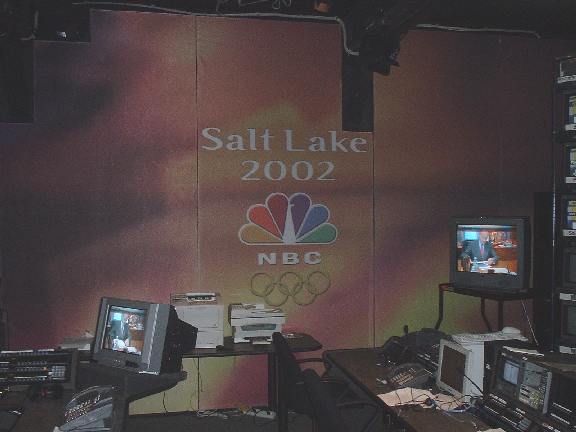
This adorns one wall of the A Control room.
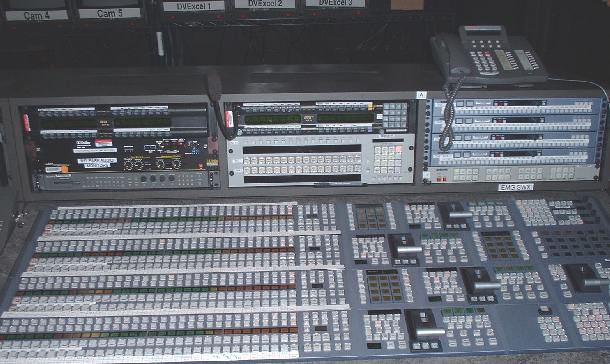
The Sony MVS-8000 production swicher. The technical director switches the video for the program through this console.
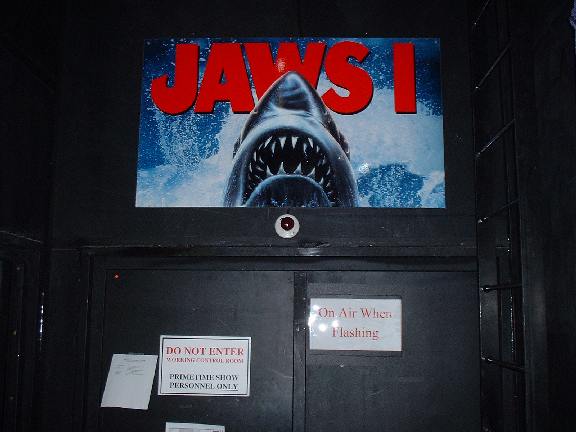
The 2 pre-fab studios are nicknamed JAWS 1 & JAWS 2, for 'just add water studio'. That means that the units are self-contained, requiring only chilled water for air conditioning, and of course, electricity. The exact same setups were used at the 2000 Sydney Olympics. This sign hangs above the door to Control A.
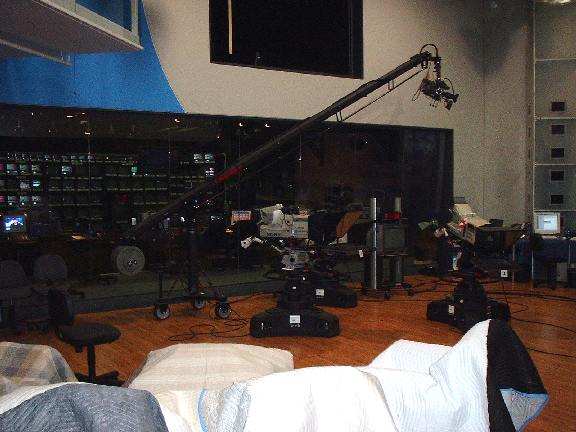
Now inside Studio 1, looking back towards Control A. The studio furniture is covered up, since it will not be used until this afternoon. Behind the black square at the top of the picture is the projector which displays images on the large cylinder above where the anchor person sits.
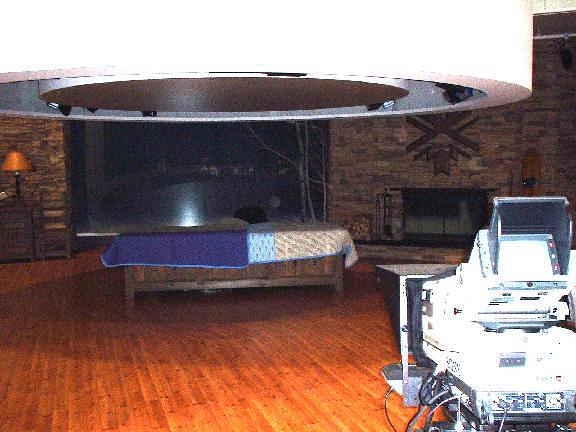
There's the anchor desk, with fake fireplace on the right, and the bottom of the cylinder at the top of the photo.
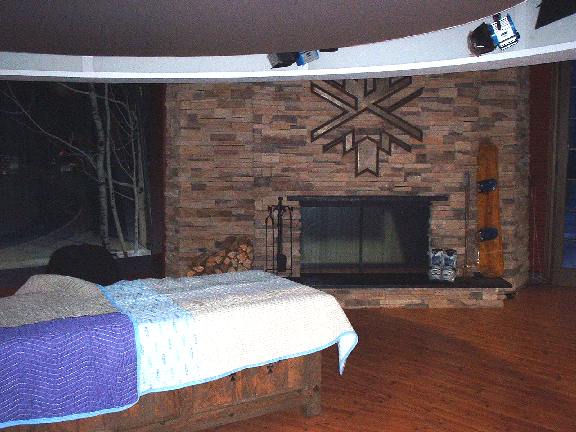
Standing under the cylinder, again showing the desk-covered up for the night-and the fireplace. The fire you see on TV is actually a mirrored reflection of a tape of a fire. Looks pretty good, even in the studio, but it's not on now.
At another time, here's what it looks like with the fireplace ON, and yours truly in the anchor chair.
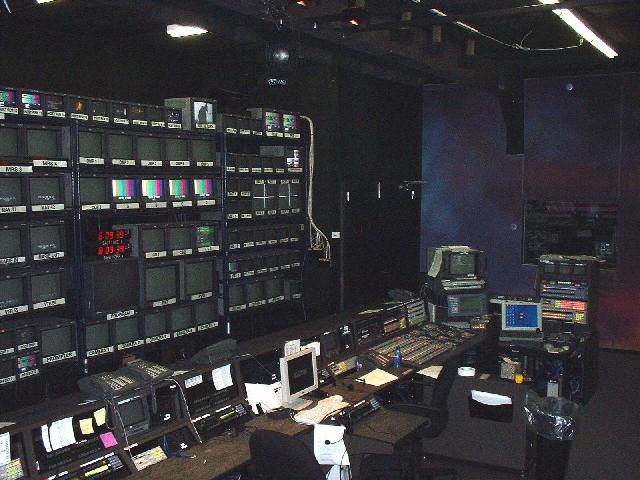
This is the B Control room. B Control handles the cable and late night Olympic broadcasts, and is equipped with the same equipment as Control A. A window to the audio control room for B Control is at right in the picture.
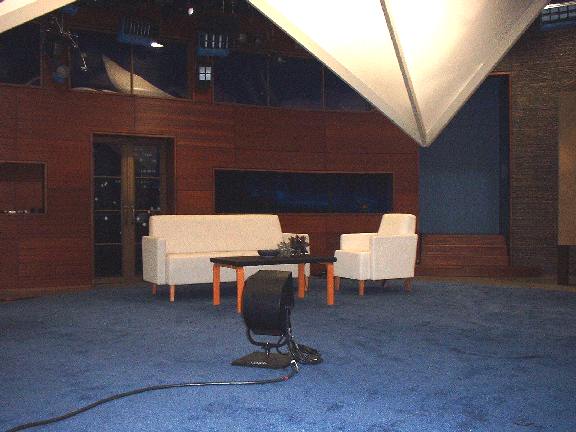
This is studio 2. That's a studio light on the floor, and overhead is a big snowflake.
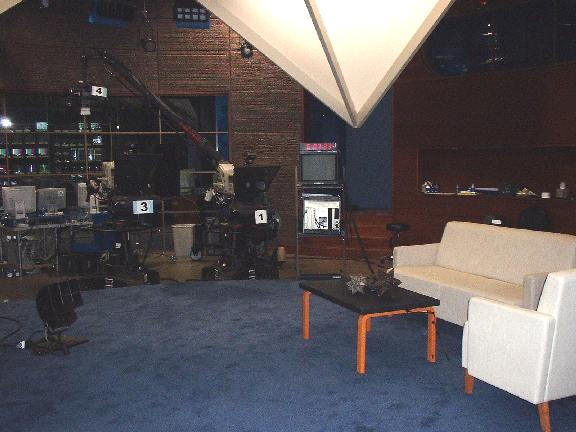
Still studio 2, which also has a window wall looking into its control room. And there's that giant snowflake again.
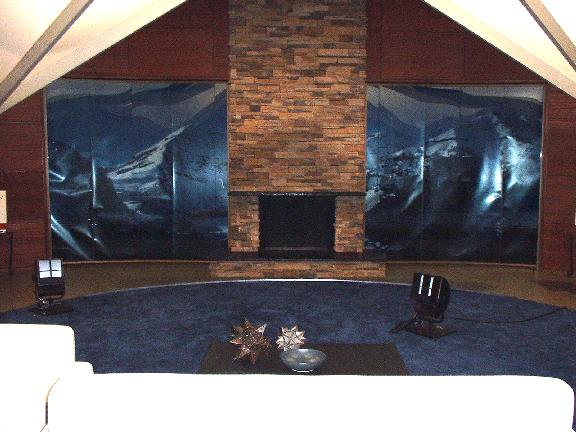
Studio 2 has a fake fireplace as well as fake windows to the outside.

All of the signals from the studio cameras run through this equipment. This is the video control room for both studios.

There are 4 announcer voice-over booths like this one.
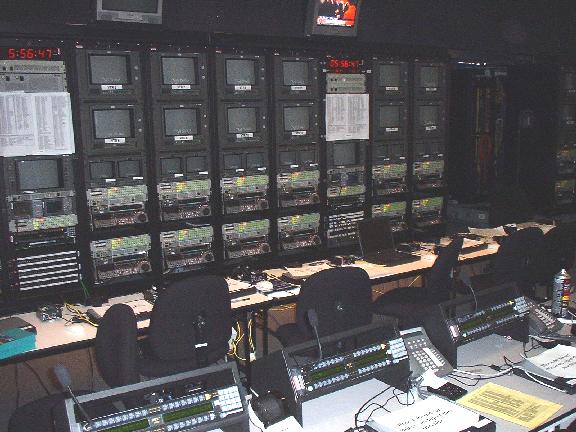
This is part of Central Videotape, where all of the events are recorded. There are 12 tape machines in this photo, and this is only about 20% of the CVT area.
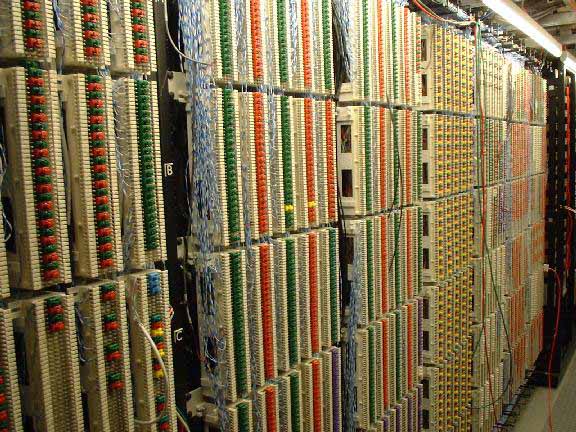
Here is a lot of my work--the wiring you see here carries our comms circuits from where they enter the NBC space to where they need to go inside, and vice-versa. Looks like a mess, but every wire is documented, believe it or not.
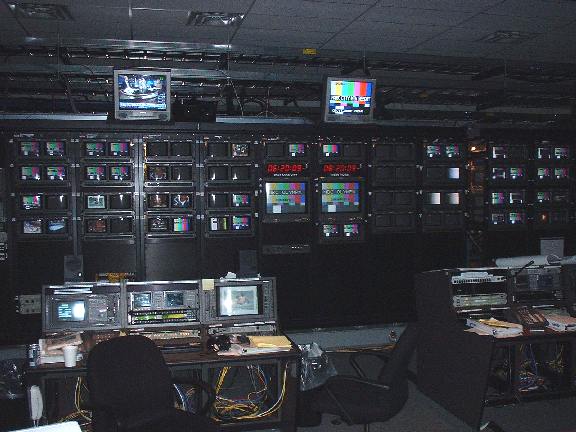
After I check the communication circuits with the various venues each day, they check in with transmission, which is shown here. The engineer at the desk checks the quality of the incoming video and audio.
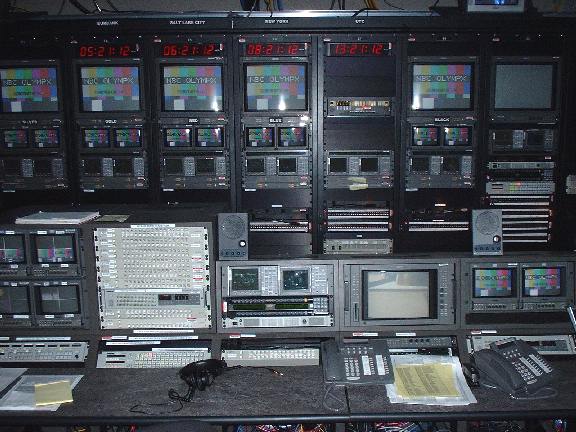
The folks who sit here check the quality of signals sent out from the IBC for broadcast on the NBC network and its cable siblings.

This is where I work, the comms office. Here is some of the equipment we use to get the job done of allowing people to communicate with each other. It includes a 4 frame (480 by 480) RTS Adam intercom system. A lot of hardware, controlled by a couple of PC's we have in front of us.

A scene from out of "The Matrix"? No, this is what it looks like above the ceiling in the International Broadcast Center. The Salt Palace Convention Center is very large, and its exhibition halls have ceilings that are probably 30 feet high. When they turned it into the IBC for the Olympics, they put up temporary walls & drop ceilings, so that down on the floor, you can forget you're in the middle of a much larger structure. Up here, they installed a temporary HVAC (heating-ventilation-air conditioning) system of large blue ducts, about 6 feet in diameter, and smaller ducts branching off into the separate rooms. Large ducts for larger rooms, smaller ones for the edit rooms. When the system is turned on, the flexible blue ducts, which are suspended from the ceiling of the Salt Palace, inflate like a very long balloon. An intersting effect to watch. By the way, the ceilings and walls will start to come down the day after the Olympic closing ceremonies, as a convention is booked for the Salt Palace in early March.
Back to the Salt Lake City page
WAY back to the JeffBaker.us homepage
Send an email to Jeff